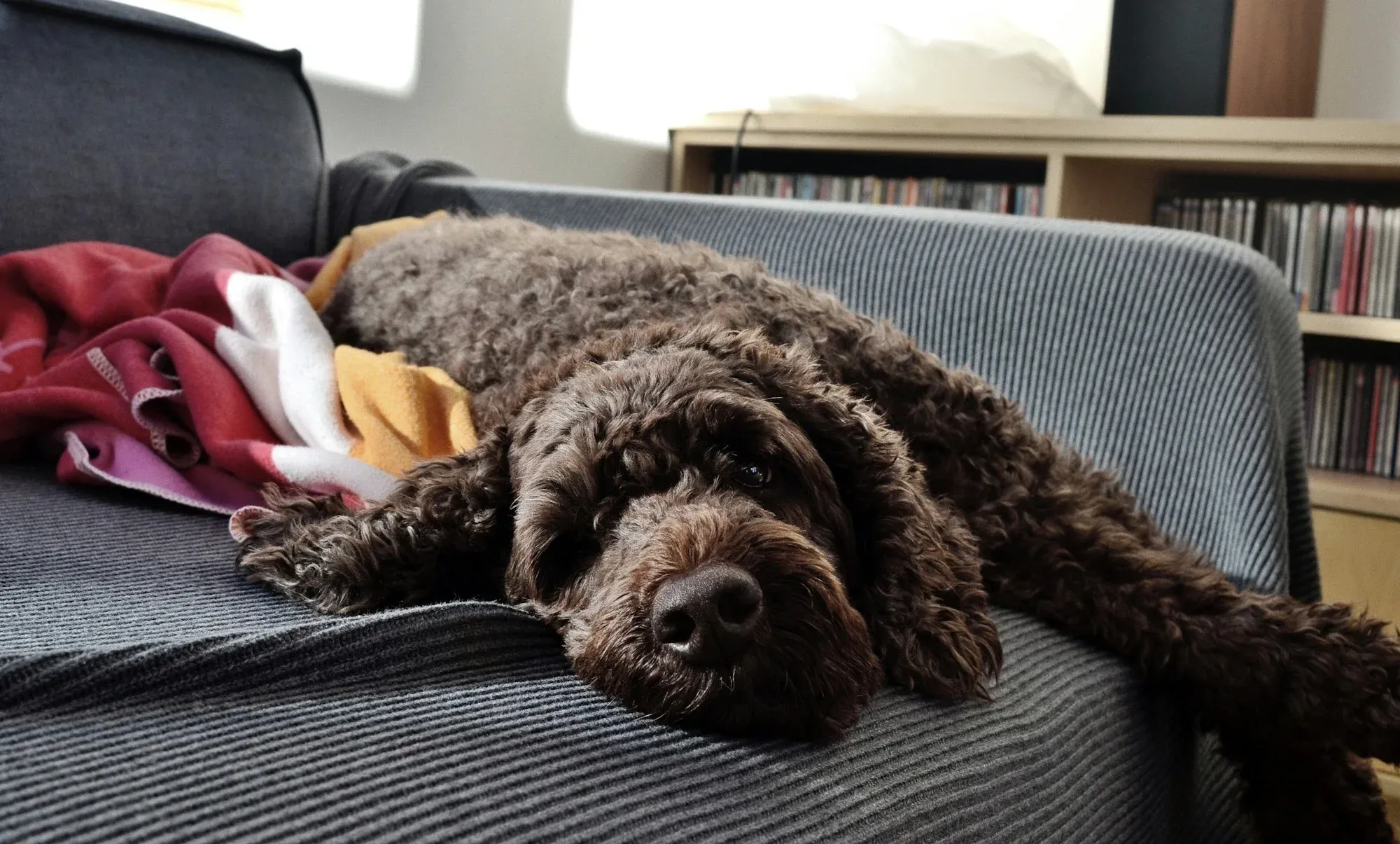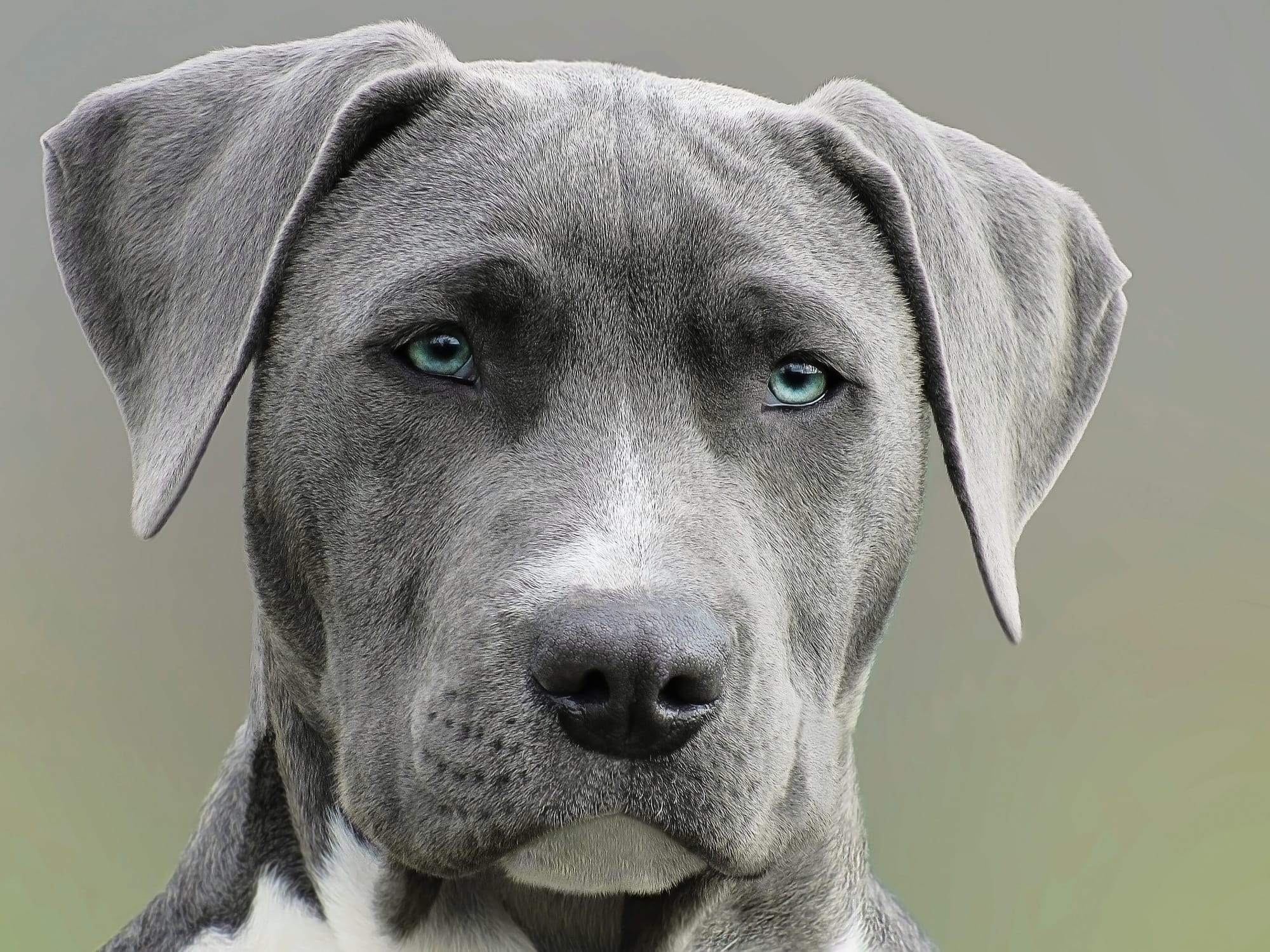You would be forgiven for thinking that an English Bulldog and an Olde English Bulldogge were the same breed. After all, some people have a penchant for spelling words weirdly to make them seem more sophisticated or “old English.”
However, the Olde English Bulldogge is actually American and the two breeds, though similar, are not the same. The modern English Bulldog has severe health and lifespan issues due to selective breeding for appearance, leading to overheating concerns and compromised athleticism. In contrast, the Olde English Bulldogge is revived as an agile, athletic, and healthy breed.
So let’s dive in and discover the differences between the English Bulldog vs the Olde English Bulldogge. Perhaps this information can help you decide if you want one of your own!
Keep Your Bulldog Safe and Sound with the Fi Dog Collar
For dog owners who cherish the companionship and unique qualities of bulldogs, the Fi Dog Collar provides an essential tool to ensure their safety and well-being. With state-of-the-art GPS tracking and geofencing capabilities, the Fi Dog Collar helps you monitor your dog's location, activity, and sleep patterns seamlessly through the Fi app.
Whether you own an English Bulldog or an Olde English Bulldogge, maintaining their health and preventing potential escapes is easier than ever. Enhance your pet parenting experience and give your bulldog the freedom to explore safely. Visit TryFi.com today and discover how the Fi Dog Collar can bring peace of mind to your family!
Though these dogs look similar to each other, the trained eye can easily spot one from the other. Olde English Bulldogges are slightly taller and heavier than their English counterparts.
They both have big heads and stocky bodies, but Olde English Bulldogges are more appropriately proportioned. They also have fewer skin folds and health problems — and there's a good reason for that. Let's dive into the breeds' origins to understand.
Origins of the Breeds
By taking a look at the origins of these breeds, we immediately understand why the Olde English Bulldogge came to be. But let’s start at the beginning with the English Bulldog.
In 2006, David Leavitt formed a registry for the original Olde English Bulldogge, which he called the Leavitt Bulldog, to ensure the purity of the breed.
English Bulldog Origin
For centuries there was a popular yet barbaric sport known as bull baiting. A bull (or bear) would be tied up in a ring and dogs were sent in to subdue it. They would latch onto the bull with powerful jaws and bring them to the ground.
People began breeding dogs with the appropriate characteristics for this sport. This included large heads with strong jaws and stocky, muscular bodies. Thus, in the 17th century, the English Bulldog was born.
Bull baiting was eventually outlawed but then people fell in love with the English Bulldog for their unusual and adorable appearance. They became popular companion dogs and breeders did their best to accentuate the cute characteristics that made them so endearing.
Unfortunately, by exaggerating these characteristics, breeders created a dog with a host of health problems.
Super short noses created breathing problems, and overly stocky bodies created joint and spine problems. And those big chunky heads? Well, many English Bulldogs can't give birth naturally, the head simply won't fit!
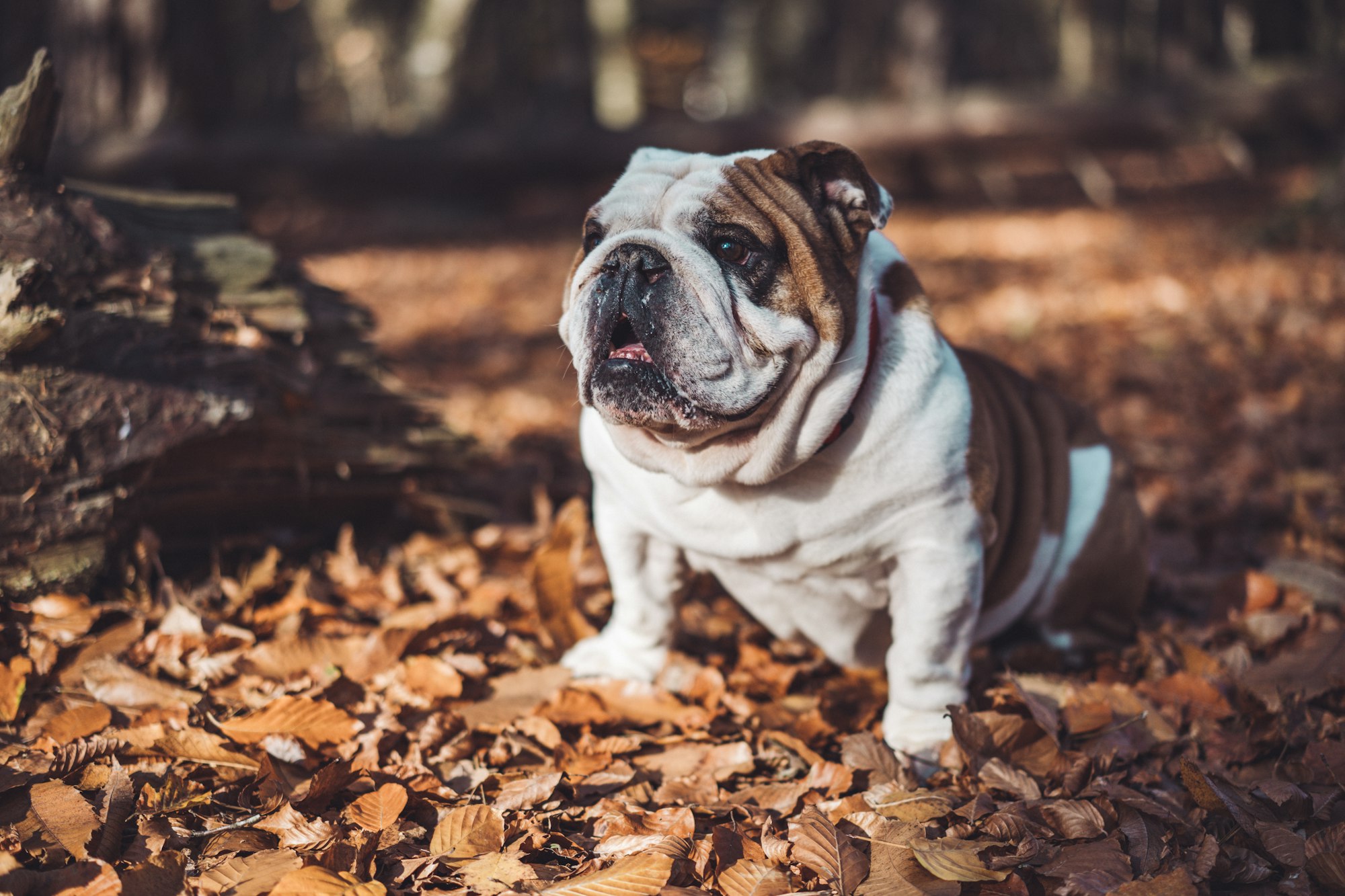
Olde English Bulldogge Origin
This is where the Olde English Bulldogge enters the story. In America, David Leavitt, a breeder from Pennsylvania, set out to create a dog that somewhat retains the characteristics of the English Bulldog — without the host of health problems.
He did this by mixing English Bulldogs with American Bulldogs, Bullmastiffs, and some other breeds. He successfully created a dog that is exactly what you’d expect if you wanted an English Bulldog without the health problems. This breed is often referred to as the Leavitt Bulldog to ensure a 100% genetically pure Olde English Bulldogge.
The Olde English Bulldogge looks similar to the English Bulldog. The cute characteristics are still there but aren’t exaggerated quite so much — making the dog more appropriately proportioned and thus healthier in general. The Leavitt Bulldog Association plays a crucial role in ensuring the breed's health and purity through extensive medical screening and by connecting potential owners with reputable breeders.
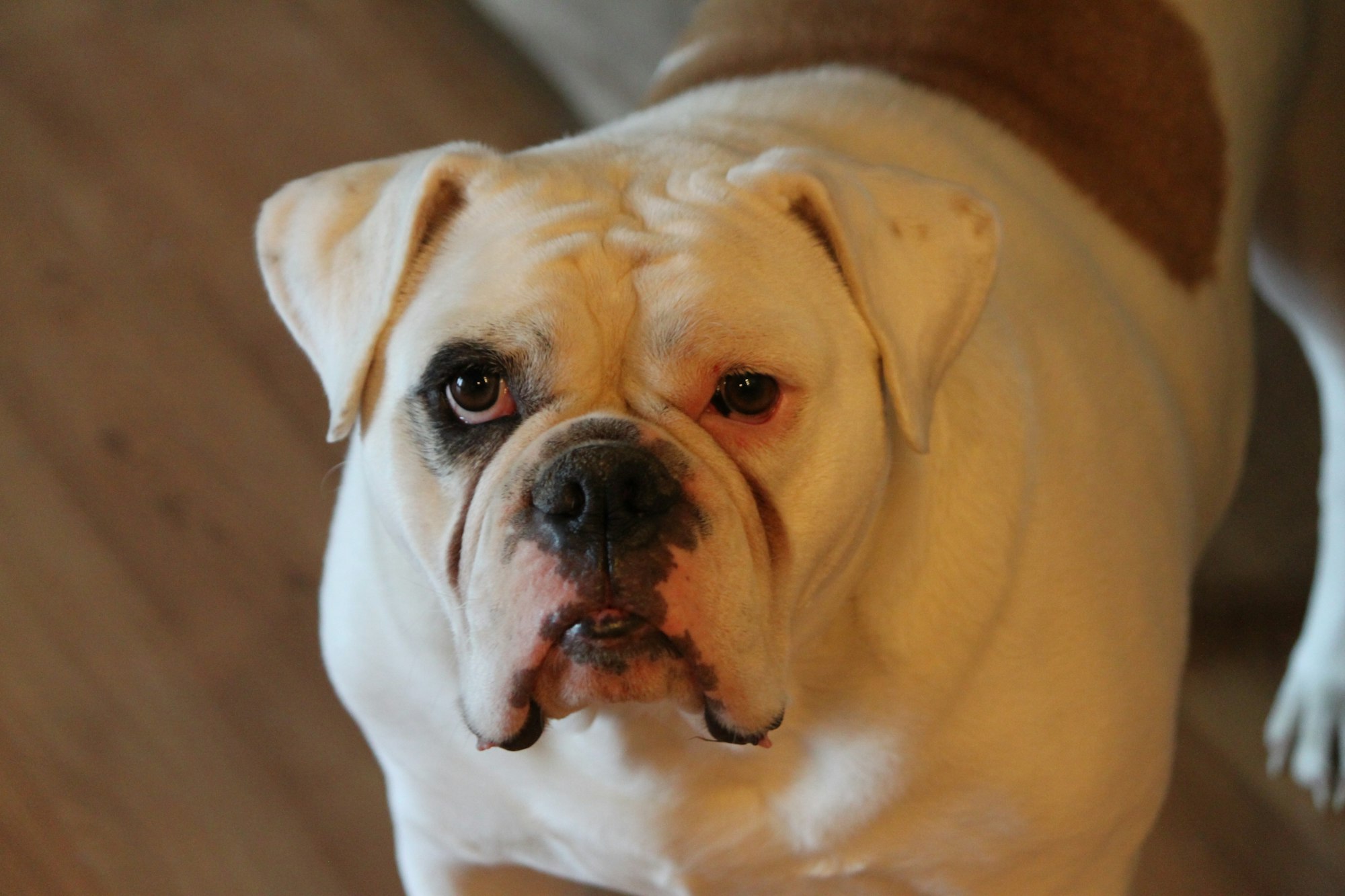
Olde English Bulldogge vs English Bulldog: Appearance & Size
The English Bulldog will stand between 12 and 15 inches and weigh between 50 and 55 pounds. The Olde English Bulldogge usually reaches between 16 and 20 inches and can weigh between 50 and 85 pounds.
Both dogs are considered medium-sized dogs, though the Olde English Bulldogge is slightly larger. Remember there is Bullmastiff in their family tree!
They both have thick, short coats that don’t require much grooming. Both have folds of loose skin, though the Bulldogge’s wrinkles are less pronounced.
Their basic shape is similar, but the Olde English Bulldogge has been stretched out somewhat. They have squarish heads with short noses, with the Bulldogge’s nose being short but not so “smashed in” as the Bulldog’s.
They also both have stocky bodies, but where the English Bulldog’s legs are disproportionately short, the Bulldogge has longer legs for a more balanced gait.
Olde English Bulldogge vs English Bulldog: Temperament
There are small differences in the temperament of these two dog breeds as well.
Since the English Bulldog was originally bred for bull baiting, you might expect it to be somewhat aggressive and hot-tempered. However, this characteristic has been bred out of the breed over the years.
Now, though personality varies between individuals, most English Bulldogs are quite even-tempered, loyal to their families, a little protective — and quite lazy. They are still strong but quite content to lay around and accept belly scratches.
The Olde English Bulldogge has a similar temperament, but with the introduction of the other breeds, it is a little different. Again, they are not aggressive and are very happy to laze around. They are eager to please and make great family pets.
However, they can have a prey drive so this is important to be aware of if you have other (particularly smaller) pets in the home. They are also quite agile and a little more energetic than the English Bulldog, which means they will happily perform a job if you give them one.
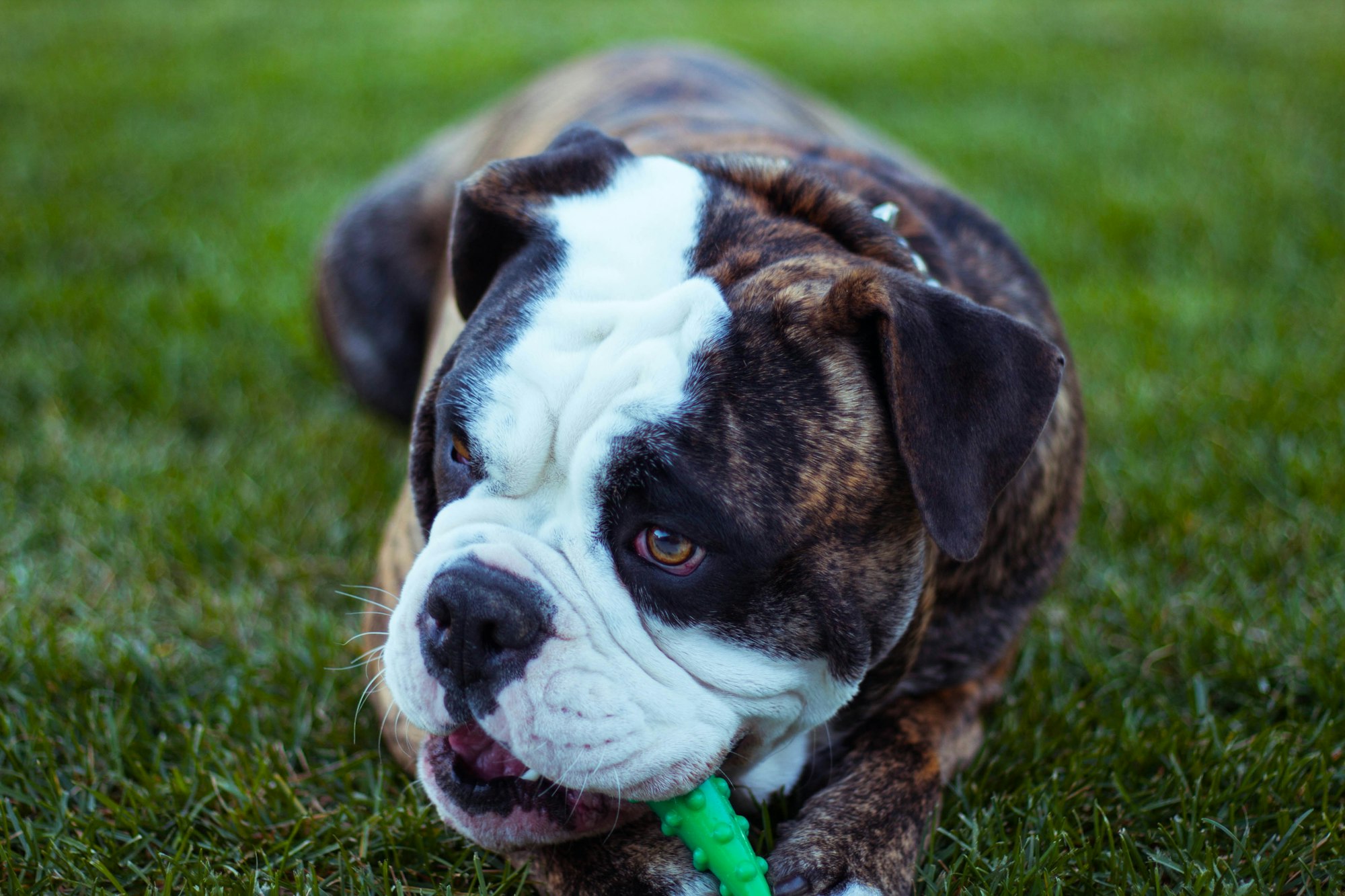
Olde English Bulldogge vs English Bulldog: Training & Exercise
English Bulldogs don’t need a lot of exercise. In fact, too much exercise isn’t good for them as it can exacerbate breathing issues because of their short noses. However, they do like to keep their minds somewhat active and a short walk each day is usually enough.
Early socialization is crucial if you want your English Bulldog to get along with other animals. Because of their fighting background, they can be a little standoffish with other dogs.
English Bulldogs aren’t overly smart, and they can be a little stubborn. However, they are usually eager to please and training isn’t too difficult.
The Olde English Bulldogge is a little smarter, making them somewhat easier to train. However, they can be on the independent side, which means you have to show them who is boss without being harsh. Reward-based training works best for these eager-to-please dogs.
Olde English Bulldogges are an athletic breed, more agile and athletic compared to modern English Bulldogs, but still don’t require a ton of exercise. Light to moderate exercise is enough to keep their bodies and minds healthy. Make sure they have chew toys or puzzle toys on hand regularly to provide mental stimulation.
Early socialization and training are important for these pups. The earlier you start, the easier the whole process will be.
Olde English Bulldogge vs English Bulldog: Health Problems
Unfortunately, the English Bulldog is riddled with health problems. They are susceptible to eye, dental, and breathing problems because of their face shape. Additionally, they can’t cool themselves efficiently and can overheat quickly in hot weather. Dental disease is also a common health issue in dogs, affecting their overall well-being.
Their short, pudgy bodies are prone to hip and back problems. All in all, these little guys, unfortunately, suffer from a lot of issues, which can mean expensive vet bills over time.
Olde English Bulldogges were created with the intention of correcting some of the English Bulldog’s health problems. Breeders have somewhat succeeded as these dogs are hardy and stronger.
They can still be susceptible to some of the same issues like hip dysplasia or eye problems, but it is far less common. Issues with the hind legs, such as hip dysplasia, can sometimes require X-rays to diagnose and may need surgery in severe cases.
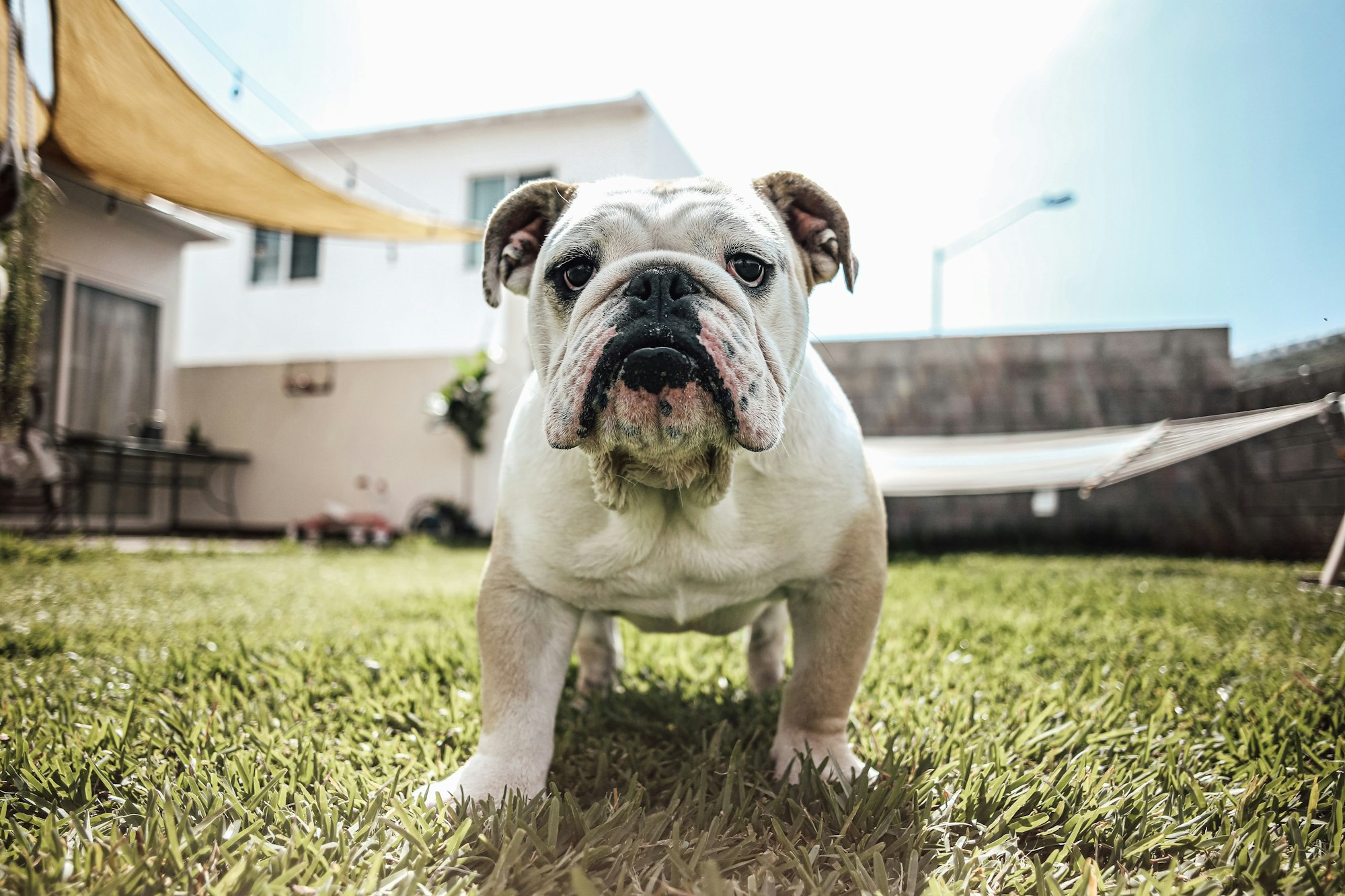
Are Olde English Bulldogges or English Bulldogs Dangerous?
Not really. Like any dog, individuals will require socialization and training to be well-behaved. However, aggression has mostly been bred out of these breeds. They are not necessarily more likely to bite or attack people or other animals than any other dog.
English Bulldogs are pretty chill. They don't tend to be territorial and their prey drive is pretty low. Olde English Bulldogges can sometimes be territorial and protective of their owners. They can also have a bit of a prey drive, but this can be tempered with proper socialization and training.
Which Breed Is More Intelligent?
The Olde English Bulldogge gets to claim higher intelligence. The mix of other breeds helps boost the somewhat low intelligence of the original English Bulldog.
However, neither dog is high on the list of intelligence as far as dogs go. That's part of the reason they make good couch potatoes, they don't need the mental stimulation of a German Shepherd, for example.
Which Breed Lives Longer?
Because of their health problems, English Bulldogs tend to live shorter lives than their American counterparts. They enjoy only 8 - 12 years of life while Olde English Bulldogges can live about 11 - 14 years.
Can These Breeds Live in Apartments?
The aggression and energy required for baiting bulls have been bred out of these modern bulldogs. Neither of these breeds has high exercise needs and both are perfectly content to lie around on your couch waiting to snuggle with you.
This is part of what makes them so popular. They are easy to care for even in an apartment in the city.
Is One of These Bulldog Types for You?
Have you considered adding one of these bulldog types to your family? Many people fall in love with the adorable look of the English Bulldog, but aren’t prepared for the various health problems they can suffer from.
If you like the look but would prefer fewer health issues, the Olde English Bulldogge can be a great choice. But be prepared, there are only a few breeders providing this type of bulldog and you’ll pay a pretty penny to get one. It's also important to feed them high quality dog food rich in protein, fatty acids, and probiotics to meet their high activity levels and energy requirements.
The Olde English Bulldogge is a purebred dog developed in the early 1970s with the goal of recreating a Bulldog with the looks, health, and athleticism of the 18th Century Bulldog. The breeding project aimed to rapidly achieve a purebred dog using a linebreeding scheme and focused on creating a healthier and more athletic breed with greater longevity. The United Kennel Club (UKC) recognizes and registers the Olde English Bulldogge breed and works with the Canine Developmental, Health and Performance Registry (CDHPR) to develop breeding plans and strategies for improved breeds of dogs.
Regardless of which bulldog type you choose, you’ll get a wonderful companion that would make a great addition to your family. Especially if you don’t have tons of time to exercise them extensively.
Get more expert advice on pet-parenting by visiting the Off Leash blog at TryFi.com.
TryFi’s The Fi Dog Collar is a must-have for any pet parent, it’s a GPS tracking collar that helps you keep tabs on your dog’s location, activity, and sleep patterns, and alerts you if they escape your backyard. Try the Fi Dog Collar today!
